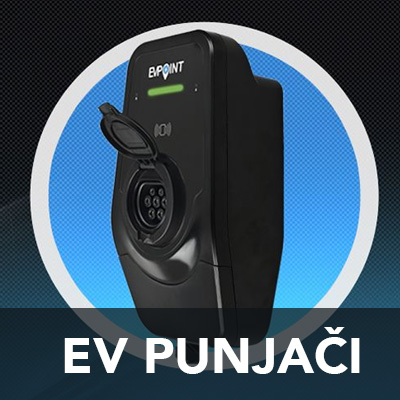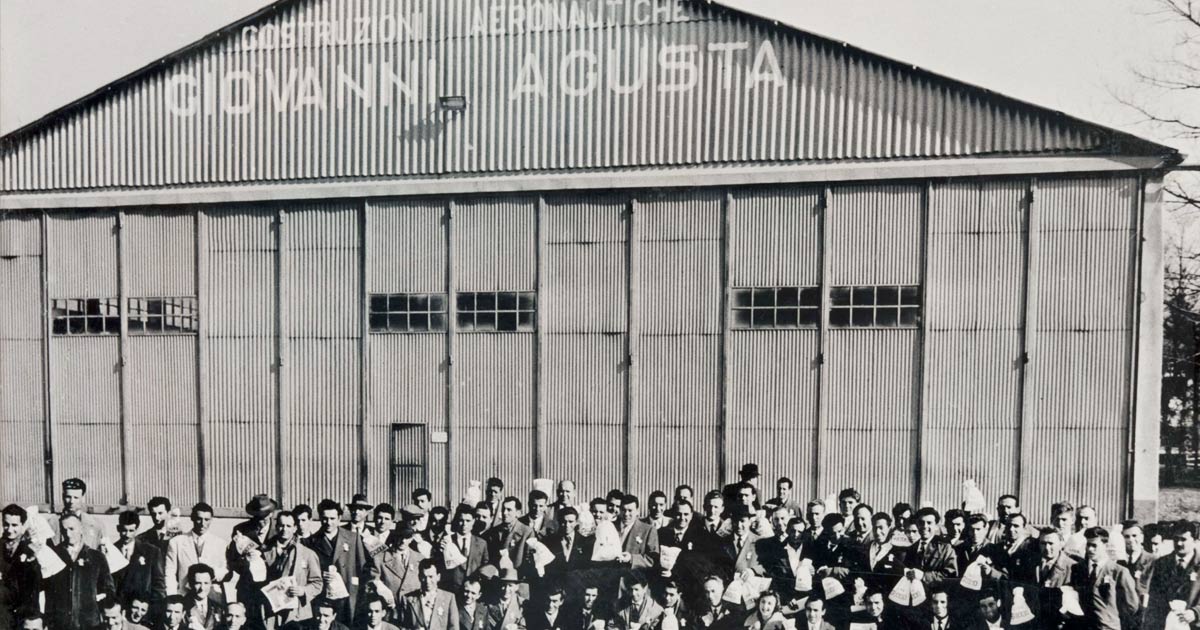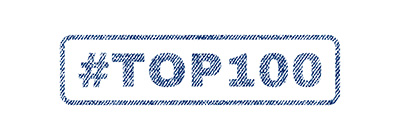Passion, racing, victories. From aeronautics to motorcycles. A history made of people, joys and drama.
1907 - THOSE DARING YOUNG MEN IN THEIR FLYING MACHINES

The history of Agusta started in 1907, when Count Giovanni Agusta, a Sicilian aristocrat with a passion for flying machines, founded the Agusta aeronautics company. He soon moved to Northern Italy, in Cascina Costa near today’s Malpensa airport. The Count had signed up in Malpensa’s first Air Battalion. Production of aeroplanes boomed during World War I
1927 - FROM AEROPLANES TO MOTORCYCLES

Count Giovanni died in 1927, his widow Countess Giuseppina and son Domenico succeeded him at the helm of the family business. After the war, the aeroplane industry had dramatically declined, and Domenico decided to diversify into motorcycles, yet aeroplanes production was not abandoned. It soared again through World War II, but motorcycles had definitively entered the company’s DNA
1945 - THE FIRST MV BRANDED MOTORCYCLE

As a consequence of the war, aeroplane production was forbidden in Italy, so the Agustas focused on motorcycles. They created the MV “Meccaniche Verghera” brand in 1945. The first MV branded motorcycle was officially launched in the autumn of that year. Originally it was meant to be called “Vespa”, but the name had already been registered! It more simply went down in history as the “MV 98”. The Agustas’ passion for avionics clearly showed in their motorcycles, giving them a raging racing soul, and the MV 98 started a winning string for the brand that was to last for decades.
1946 - THE ROARING FORTIES
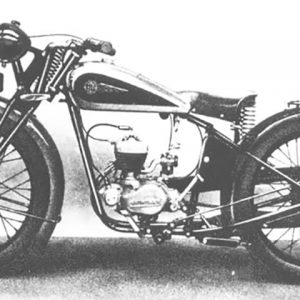
The MV 98 was upgraded to the “MV 98 Sport” model, with an impressive 5hp engine, a telescopic fork, a shorter frame and sportier handling. Other models followed soon, with increasing horsepower and cylinder capacity. They made a sensation at the 1947 Milan Trade Fair, where Agusta also presented its first “luxury” version of the original 98. FRANCO BERTONI MV Agusta’s first racer on the 98 machines and later the 125s. His, and the brand’s first victory came in 1947 in Carate Brianza, near Milan.
1947 - FRANCO BERTONI

MV Agusta's first rider on 98 machines and later the 125s. His, and the brand's, first victory came in 1947 in Carate Brianza, near Milan.
1949 - SCOOTER "TIPO B"

MV Agusta's 125 cc scooter had a two-stroke single cylinder engine and a four-speed gearbox.
1950 - ARCISIO ARTESIANI

Artesiani was important for MV Agusta in his double role as a race and test rider. He was the first to ride the tricky 500 four-cylinder in a race.
1951 - LESLIE GRAHAM

This ex-RAF pilot rode the twin-cam MV 125 for its first win on a long series, on September 30th, 1951 at Truxton, England.
1953 - CARLO UBBIALI

One the all-time greats. Nicknamed "the flying chinaman" because of his appearance, he won five World Championships in the 125 category, and two in the 250. He was also three-time Italy's champion in the 125 class and won the 250 title twice.
1954 - FORTUNATO LIBANORI

A stylish rider, Libanori was one of count Domenico's favorites. Among his numerous wins, the 1955 race in Crema with the single-cam 175 MV with the twin-cam kit.
1955 - HELICOPTERS AND RACING BIKES

Ignoring the first signs of a new oncoming crisis, Agusta defiantly decided to acquire the licences for production of Bell Helicopters. This move brought new, leading-edge technology to the already legendary MV Agusta racing bikes, making them nearly invicible.
1955 - 300 BICILINDRICA
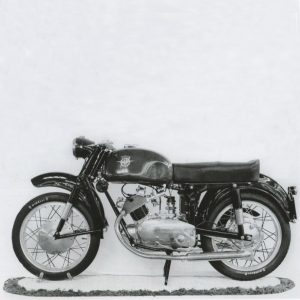
The first MV Agusta designed by an external "celebrity" designer. Gianni. It was extremely refined also under technical aspects, with avant-garde details such as electric starting.
1956 - JOHN SURTEES

When Count Domenice signed him up, John Surtees was already a superstar, with seventy seven wins as a visiting card. Surtees gave MV Agusta its first World Championship title in the 500 class.
1958 - OTTANTATRE

The unusual 83cc was a utility, light-weight machine. It sported a large toolbox to fill the central space.
1959 - CENTOMILA

This 125cc light motorcycle was so reliable its warranty was extended to 100.000 km, hence its nickname "centomila" (hundred thousand).
1960 - SCOOTER "CHICCO"

The Chicco's 155 CC two-stroke single cylinder was specifically designed for this model. This elegant, well proportioned machine, went on the market with a hefty price tag of 157.500 Lire.
1960 - UNCHALLENGED DOMINATORS OF THE RACE TRACK
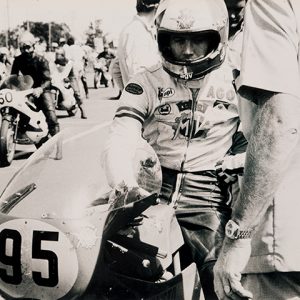
Mass car ownership caused a sharp decline in the sales of motorcycle production, yet MV Agusta's response was to offer ever innovative models that appealed to the true motorcycle enthusiasts. The strategy paid off also thanks to MV Agusta's uninterrupted successes on the race tracks. 1965 was the start of what was probably the most celebrated combination in the history of racing motocycling: that of Giacomo Agostini and MV Agusta's inline three-cylinder.
1961 - MIKE HAILWOOD

One of the greatest riders of all times. He invented the "froglike" position, with knees splayed outwards. The winner of 1965 Tourist Trophy with the 4-cylinder 500.
1964 - BRUNO SPAGGIARI

Italy's 1964 champion in the 125 class with the MV 125 twin-cam.
1965 - GIACOMO AGOSTINI

1965 was the start of what was probably the most celebrated combination in the history of motorcycle racing: that of Giacomo Agostini and MV Agusta. In his career, “Ago” won 311 races, including 125 World Championships events and 10 Isle of Man’s TTs. He won 13 World Championships and 18 Italian titles. He made his victorious curtain call with the brand in 1976 at the Nürburgring.
1965 - 125 REGOLARITA
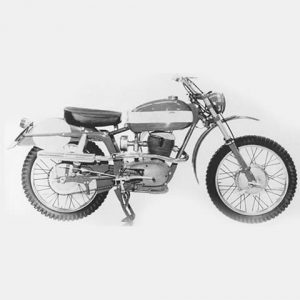
MV Agusta was actively involved in trials competitions throughout the 60's. The 125 Regolarita was specifically designed for competition.
1967 - 4 CILINDRI 600CC

Closely related to the racing machines of the time, the 600 four cylinders attracted enthusiastic sporting riders like months to a flame.
1970 - DECLINING GLORY AND THE END OF AN ERA

Agostini's and MV Agusta's domination of the world's race tracks lasted well into 1970's. After the death of Count Domenice in 1971, the company suffered from financial difficulties and internal controversy about what strategy to adpot for the future. On August 29, 1976, the 15-time world champion from Brescia rode a MV 500 for his last victory in a Grand Prix. It was also to be MV Agusta's last appearance on the highest step of a podium. An ailing MV Agusta carried on with a limited number of models and reduce invesments in racing until the last motorcycle was rolled out of the Cascina Costa hangars, in 1980.
1970 - 750 SPORT

With its red, white and blue livery, it can be considered the first "America".
1970 - 350 BICILINDRICA
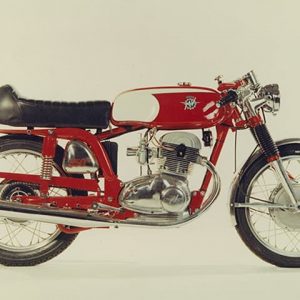
The 350 Twin was MV Agusta's response to the increasing demand for a top performing medium-sized bike.
1972 - PHIL READ
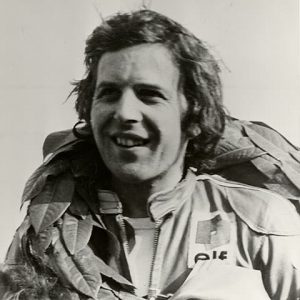
Pugnacious and rigorous, Phile Read was Agostini's natural succesor. Read was not prepared to play second fiddle to anyone. The already five-time World Champion went on to win sixt title for MV Agusta. Known for his taste for luxury, he was often seen arriving at the circuits in a white Rolls Royse.
1992 - RISING FROM THE ASHES

In 1992 the MV Agusta trademark was acquired by Claudio Castiglioni's Cagiva (CAstiglioni GIovanni VArese), that had started producing motorcycles under its own brand twelve years earlier in Schiranna, on the shores of Lake Varese, after taking over the ailing Aermacchi-Harly-Davidson short-lived venture. The move proved immediately successful as the MV Agusta brand had retained most of its enormous popularity with racing bikes enthusiasts.
1993 - BIRTH OF A MONSTER

Ducati was among Castiglioni's acguisitions at the time, and the brand, now out of the Cagiva galaxy, was to foster the birth of a new paradigm in the industry: the "naked" sports motorcycles. It was dubbed "Monster", and the legend has it that it was named after the popular figurines that were found at the time in the packs of a well known brand of crisps. Apparently the son of the motorcycle's designer, Galluzi, was very found of those crisps.
1993 - TECHNOLOGY, CRAFTSMANSHIP AND DESIGN
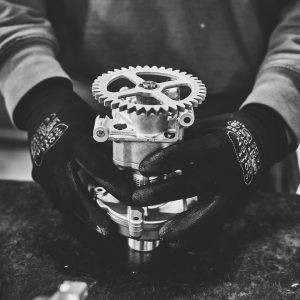
Claudio Castiglioni was an entreprenuer of extraordinary vision, with a real passion for racing. He single-handedly turned around Italy's motorcycle industry, expanding production and investing in R&D both in racing and production. After his premature death, in 2011, his son Giovanni took the lead of MV Agusta. Giovanni continued in his father's footsteps, upholding the values of craftsmanship, superior design and leading-edge innovative technology. Under his leadership, MV Agusta created true icons such asd the Brutale, the ultimate naked sports motorcycle, and the F3, the best middle-weight racing motorcycle. He was also pioneer in seeking partnerships with Pirelli's leading design center, and Lewsi Hamilton, five-time F1 World Champion, to create exclusive, inspiring motorcycles. A roraring tradition that continues today, on the quiet shores of Lake Varese.
1997 - F4 750

The first bike of the new era. Also the first superbike, and still the unfading, absolute reference for this segment.
2003 - BRUTALE 750-1090

MV Agusta's first naked. Aggressive, stylish. An iconic design statement. This version had a 750 cc four-stroke four-cylinder engine.
2004 - F4 1000
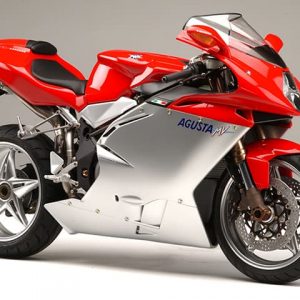
Following the general trend of ever increasing performance, MV Agusta presented the F4 1000.
2012 - F3

The sportiest mid-sized superbike. It had an inline-three engine and featured a counter-rotating crankshaft, on top of many technological advancements.
2013 - RIVALE
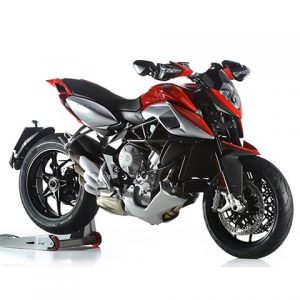
Inspired by "motards", the Rivale, presented in 2013 in Vence, used the same engine as the Brutale 800.
2014 - TURISMO VELOCE

The first MV Agusta to target the "tourers" segment. It was designed for a more comfortable ride, yet retained MV Agusta's racing soul.
2014 - DRAGSTER
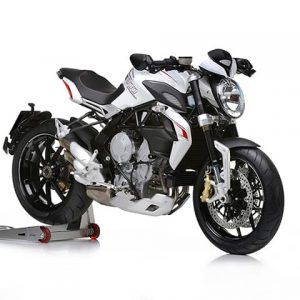
The "motard" range extended into the "Dragster", so -named because of its blistering acceleration and its extra-wide rear tyre.
2015 - STRADALE
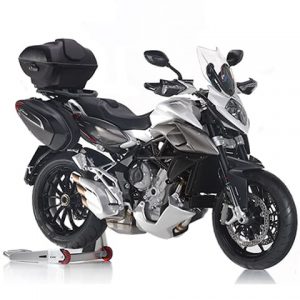
Conceived as the "entry level" version of the Turismo Veloce, it had the same specification but offered less protection.
2017 - RVS #1

A complete, handcrafted, reintepretation of the Dragster. Pure Motorcycle Art.
2018 - F4 CLAUDIO

Past, present and future, the most beautiful motorcycle in the world. The MV Agusta F4 Claudio is the culmination of an extraordinary story, an achievement capable of radicaly changing the sports motorcycle concept itself. A product of Massimo Tamburini's flair and Claudio Castiglioni's insight (the latter insisted in defining every last detail personally), the F4 was presented to the public in 1997, immediately becoming "the world's best-looking motorcycle". The launch marked a triumphant return for MV Agusta, a brand that has brought home more world championship trophies tha any other.
2018 - BRUTALE 1000 SERIE ORO
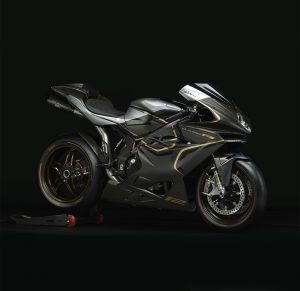
Racing is the iltimate test brench of every engineering design, the unreleting battlefield where every component is stresse to the extreme, pushed to the very limit. It is the "labaratory" where new tehnical concepts are taken to be experimented with and, in some cases conceived, with the sole focus of achieving the maximum possible performance. Power output must be strong and explosive, while the electronics must be extremely refined to allow the rider to harness all the power, bending it to his will.
2018 - SUPERVELOCE OTTOCENTO - CONCEPT

History is a reflection of time, formed by memories. But, at the same time, offers a glimpse into the future. MV Agusta has formed its roots during epic racing battles: 37 world titles, legendary victories, challenges at the limits of the impossible. Emotions that have contributed to the creation of the legend of "Meccanica Verghera".
1923 - 2021
- 1923. grof Giovanni Agusta osniva Costruzioni Aeronautiche Giovanni Agusta S.A., skraćeno Agusta, tvornicu aviona
- 1945. grof Domenico Agusta osniva MV Agusta - Meccanica Verghera Agusta, tvornicu motocikala
- 1950. Giaovanni Castiglioni osniva Cagivu (CAstiglioni GIovanni VArese)
- 1978. kreću sa proizvodnjom trkaćih motocikala
- 1979. proizvode 40.000 motocikala godišnje
- 1983. rade za Ducati 4-taktne 2-cilindrične motore od 350ccm do 1000ccm
- 1985. Cagiva kupuje Ducati i ostavlja brand Ducati koji je bolje prepoznat izvan Italije. Ducati se proizvodi u Bologni, a Cagiva u Vareseu
- 1985. Cagiva kupuje Moto Morini
- 1987. Cagiva kupuje Husqvarnu
- 1987. Cagiva kupuje MV Agustu
- 1996. Cagiva prodaje Ducati i Moto Morini brand grupaciji Texas Pacific
- 2008. Harley-Davidson kupuje MV Agustu
- 2009. Claudio Castiglioni (sin osnivača i prijašnjeg vlasnika) otkupljuje od HD-a Cagivu i MV Agustu
- 2012. proizvode prvu F3 MV Agustu
- 2014. Mercedes-AMG kupuje 25% udjela MV Aguste
- 2016. Giovanni Castiglioni i UK-Russian osnivaju COMSAR fond (dio Black Ocean Grupe kojom upravlja obitelj Sardarov)
- 2017. Black Ocean Group kupuje 49% udjela MV Agusta Holding (prijašnje tvrtke MV Agusta)
- 2017. otkupljuje se 25% udjela Mercedes-AMG
- 2018. MV Agusta se dokapitalizira sa 40 miliona eura i Timur Sardarov postaje CEO
- 2019. je prezentiran petogodišnji plan, kojim se najavljuje godišnja proizvodnja do 25.000 motocikala
- 2021. dokapitalizacija od 30M EUR-a, čime je vrijednost tvrtke dostigla 70M EUR-a, očekivani promet u 2021. od 100M EUR-a



